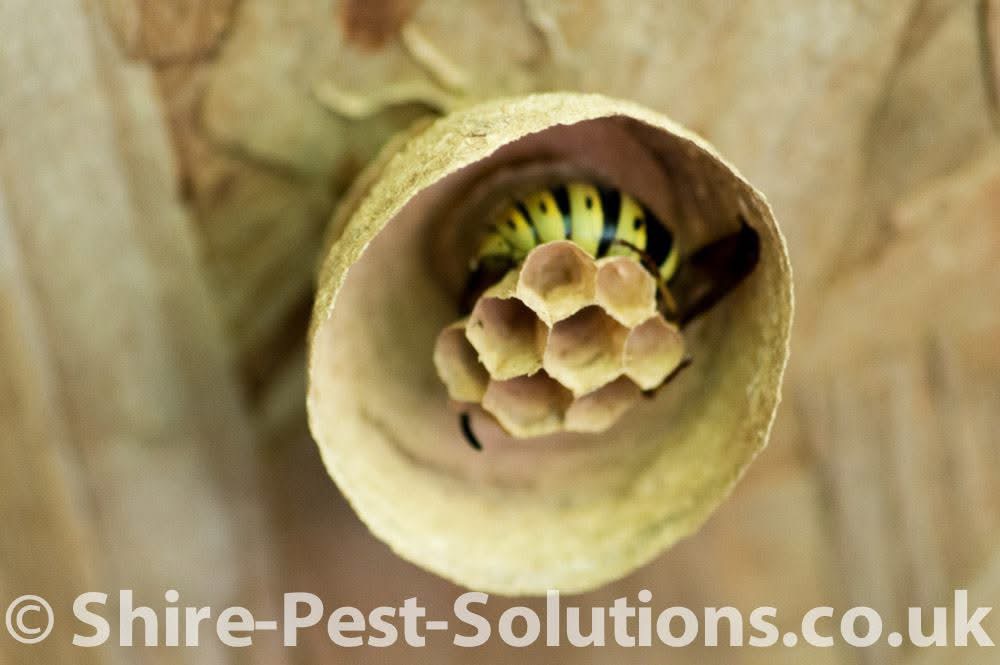
begin to notice familiar signs of seasonal change—blossoming plants, longer days, and a distinct buzzing sound in gardens and parks. These early spring visitors are not random; they signal an important phase in the lifecycle of wasps and bees.
Table of Contents
- Introduction: A Buzz in the Air
- Queen Wasps on the Move
- Ground Bees: Friends Beneath Our Feet
- Why Wasps and Bees Appear Now
- Spotting the Difference: Wasps vs Bees
- What You Can Do
- When to Call a Professional
- Final Thoughts
Introduction: A Buzz in the Air
As spring takes hold across Oxfordshire, residents in towns like Didcot and Wallingford begin to notice familiar signs of seasonal change—blossoming plants, longer days, and a distinct buzzing sound of large queen wasps in gardens and parks. These early spring visitors are not random; they signal an important phase in the lifecycle of wasps and bees.
In particular, queen wasps and ground bees become highly visible around this time. Understanding their behaviour helps you manage your property safely while protecting beneficial pollinators.
Queen Wasps on the Move
Every spring, overwintered queen wasps emerge from their dormant state. They spent the winter tucked away in sheds, lofts, hollow trees, or even under loose bark. As temperatures rise, they come out searching for suitable nesting sites. This is a crucial period because each queen can potentially establish a full colony.
You might notice a large, solitary wasp inspecting eaves, roof spaces, or garden sheds. This is likely a queen wasp scouting a new nesting location. Preventative action now can save you from a larger infestation later in the summer.
Common Nesting Spots for Queen Wasps:
- Garden sheds
- Attic spaces
- Eaves and soffits
- Garages and outbuildings
- Bird boxes or wall cavities
Ground Bees: Friends Beneath Our Feet
Another common sight during early spring is the appearance of small mounds or burrows in lawns and borders. These belong to solitary ground-nesting bees, such as mining bees or tawny mining bees. Unlike social bees, these solitary bees do not form hives or colonies. Each female builds her own nest, often in sandy or well-drained soil.
Although they may look alarming when dozens appear across your lawn, ground bees are harmless. They rarely sting and play a vital role in pollination. Their activity usually lasts only a few weeks.
Signs of Ground Bee Activity:
- Small soil mounds with a central hole
- Bees flying low to the ground
- Activity peaking during sunny mornings
Why Wasps and Bees Appear Now
The timing of their emergence follows a natural rhythm tied to temperature and day length. For wasps, the cycle begins with the queen’s search for a nest site. For bees, especially solitary types, spring marks the start of mating and nesting activity.
Several factors make early spring a critical period:
- Abundant early nectar sources from spring flowers
- Warmer, stable weather
- Availability of undisturbed soil for ground bees
- Reduced competition from other insects
Spotting the Difference: Wasps vs Bees
Understanding which insect you’re dealing with can help you respond appropriately. Here’s a quick guide:
| Feature | Queen Wasp | Ground Bee |
|---|---|---|
| Body Shape | Slender with a narrow waist | Fuzzy and rounded |
| Colour | Bright yellow and black stripes | Usually brown or orange-toned |
| Flight Pattern | Aggressive and erratic | Gentle and slow |
| Nesting Behaviour | Seeks enclosed locations | Burrows individually in the ground |
| Stinging Tendency | May sting repeatedly if threatened | Rarely stings, very docile |
What You Can Do
Spring offers the best opportunity to manage pest activity before it escalates. Here are some steps to take now:
1. Seal Potential Nesting Points
Inspect your property for gaps in eaves, vents, or shed walls. Seal any cracks or crevices that a queen wasp could use.
2. Avoid Disturbing Ground Bees
If you notice ground bee activity, allow them space to complete their short nesting period. Their presence improves garden health and plant growth.
3. Monitor Activity
Keep a log of where you notice increased wasp or bee sightings. This helps professionals identify patterns and potential nesting sites if needed later.
4. Maintain the Garden
Cut back overgrown shrubs and remove rotting wood or fallen fruit, which can attract both bees and wasps.
When to Call a Professional
Not all wasp or bee sightings require intervention. However, you should contact a professional pest control service if:
- A queen wasp is building in a high-traffic area
- A nest forms in or near your home
- You have concerns about allergic reactions
- Ground bees persist in large numbers beyond the typical window
At Shire Pest Solutions, we offer safe, eco-conscious options for wasp control in Didcot, Wallingford, and throughout Oxfordshire. We always aim to protect beneficial pollinators while resolving pest problems effectively.
Final Thoughts
This time of year brings a flurry of activity from queen wasps and ground bees. While both species are more visible during spring, their intentions differ greatly. Queen wasps lay the foundation for summer colonies, while ground bees simply look to raise a few young before disappearing again.
By understanding their behaviour, you can take timely action to prevent issues while preserving your local ecosystem. If you notice concerning activity or simply want peace of mind, reach out to Shire Pest Solutions for expert advice tailored to Oxfordshire’s unique spring pest challenges.
